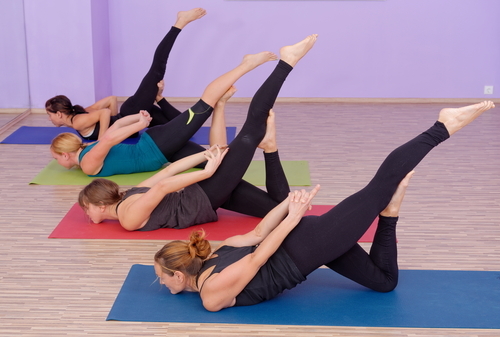Short answer
Yes, hot yoga can be bad for you. It is practiced at 104 °F over a period of 90 minutes, which can cause your core temperature to rise to dangerous extremes. Traditional yoga offers many of the same benefits and is generally much safer.
Long answer
Yoga has been around for about 5,000 years. Since its inception, yoga has been used for exercise, meditation, and spirituality. The ancient practice offers many benefits, including increased flexibility, muscle tone, energy, and metabolism. However, there are now many different types of yoga—and they each come with their own risks and rewards.
Hot yoga is one of the latest forms, and it’s rapidly growing in popularity. It’s based on Bikram Yoga, a styling developed by Indian-American guru Bikram Choudhury in the early 1970s. Bikram based his style of yoga on the climate of India, where the practice is thought to have originated. Bikram’s “hot” yoga is usually practiced in a studio at 104 °F with around 40% humidity, hence the name. In about 90 minutes, participants cycle through 26 postures utilizing two different breathing techniques.
Sounds pretty sweaty, right? So why would anyone want to do this to themselves?
The high temperature in the hot yoga room is supposed to help loosen your muscles and joints, allowing your body to stretch further, detoxify faster and tone more rapidly. It also allegedly helps alleviate chiropractic issues like arthritis, knee pain and back problems. But since hot yoga is still relatively new, there isn’t a lot substantial data to confirm or rule out these claims.
One Colorado State University study did find that hot yoga helped with moderate weight loss; however, participants weren’t losing nearly as much weight as they expected from the grueling sweat sessions. The research revealed that men work off an average of 460 calories per session, but women only burn around 330. By comparison, moderate cycling burns around 400-500 calories in the same amount of time.
Another study, sponsored by the American Council on Exercise, found that hot yoga can, in fact, raise internal temperatures and heart rates to dangerous levels, which can lead to heat illness or heatstroke. Everyone’s body responds differently, but some individuals appear to be more at risk than others... particularly those with heat intolerance.
Consult your physician before attempting hot yoga. And even if you are given the green light, it’s still important to take precautions. Before a hot yoga session, it’s crucial to hydrate: aim to drink 8-10 cups of water per day to make up for the sweat you will lose in the session. Additionally, listen to your body and know your limits. If you feel yourself overheating, step out of the room. The satisfaction of completing a full class is not worth a heatstroke.
Possible short-term side effects
- increased heart rate
- dizziness
- dehydration
- nausea

Benefits
- moderate weight loss
- increased flexibility
- improved posture
- muscle tone
Healthier alternatives
- traditional yoga
 Approved by
Approved by 















